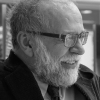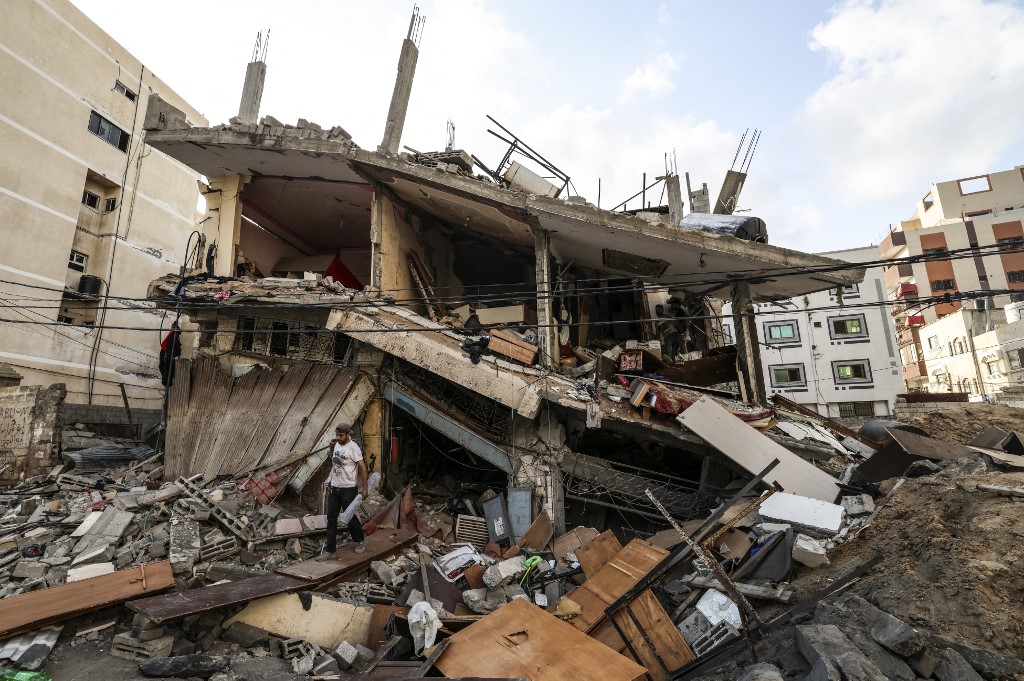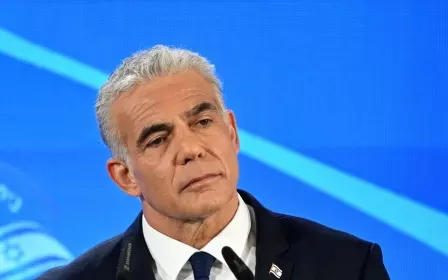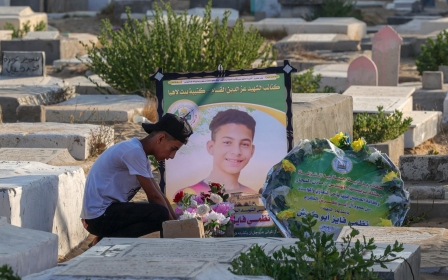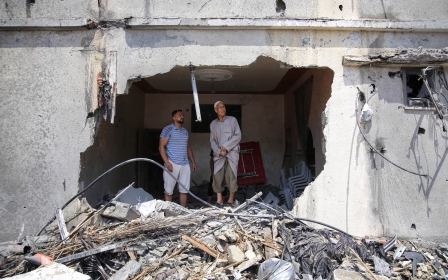Gaza on screen: How Palestinian truth implicates all of humanity

Who is telling you the truth? The Israeli military and their hasbara, or propaganda, from which major US and European media outlets (led by the BBC and New York Times) take their cues, or countless Palestinian filmmakers transforming the facts of their lived experiences into artistic truth?
Where do sublime works of art stand vis-a-vis the relentless barrage of falsehoods and propaganda that conquerors habitually spin to justify and camouflage their barbarities? What is a Ghassan Kanafani novella, a Mona Hatoum artwork, a Mahmoud Darwish poem or an Elia Suleiman film next to Israeli tanks, fighter jets, smart bombs, assassination squads, nuclear submarines or sharpshooters?
Palestinian art and cinema receive, recast and reassert that history and humanity. Gaza is not just a metaphor for our cruel world; Gaza is that world
When an empire is vast and variegated like the US, it can afford both military thuggery around the globe and ingenious filmmakers such as Stanley Kubrick, Oliver Stone or the Hughes brothers to dismantle the lies of those conquests. When a settler-colony like Israel is too small to afford such complexities, it just bombs, maims and murders, while its propaganda machinery does the camouflaging in manipulated news coverage.
In the Palestinian case, there is no military to speak of. What they have on their side are facts and truth - truth that would have gone unheard were it not for Palestinian poets, journalists, scholars, artists, novelists and filmmakers. In this battle, the Israeli Goliath is at the mercy of the Palestinian David.
But isn't this comparing apples and oranges: the military might of a settler-colony to the works of art that those under its occupation produce? Should we not compare the Israeli military with Palestinian militants defending their homeland?
New MEE newsletter: Jerusalem Dispatch
Sign up to get the latest insights and analysis on Israel-Palestine, alongside Turkey Unpacked and other MEE newsletters
But that amounts to asymmetrical warfare. Palestinians have no military, air force or navy; Israelis do. Palestinians do not receive billions of dollars in military aid from the US and Europe; Israelis do.
Palestinians wage only a form of doomed guerrilla warfare, imposed on them by cruel fate. Militarily, Palestine is no match for Israel. But artistically, aesthetically, morally and imaginatively, Israel is no match for Palestine.
War of aggression
Take the most recent Israeli atrocities in Gaza earlier this month. A relentless blockade and repeated invasions of the Gaza Strip culminated in yet another war of aggression that terrorised Palestinians, destroyed their homes and denied them their livelihoods. What is the function of Palestinian filmmakers in times of such Israeli terror?
The dominant US and UK media consider themselves to be truly objective and fair when they pronounce that there are two sides to the "Israeli-Palestinian conflict". But there are not two sides to Israel's systematic, purposeful and relentless occupation and theft of Palestine, and the murder of Palestinians. There is only one truth, which has no sides.
Israel is a brutal European settler-colony that has been targeting Palestinians and stealing their land since its inception. What little militant resistance Palestinians have managed to put forward pales in comparison to their non-violent and civil disobedience, such as the boycott, divestment and sanctions (BDS) movement. A key element of this resistance has been cinema.
In April 2019, we invited a major Palestinian film scholar, Nadia Yaqub, to come to Columbia University and curate a Palestinian film festival focused on Gaza.
With around two million inhabitants on some 365 sq km, Gaza is among the most densely populated places in the world. Many observers call it the largest open-air prison. Israel has systematically used the territory to test its most recent weaponry, causing death, destruction and despair to Palestinian civilians. The choice of Gaza as the theme of a film festival was emblematic of the larger Palestinian question, in light of their status as victims of European colonial conquest.
In a subsequent interview, Yaqub explained the significance of Gaza: "Gaza as a particular unit has an interesting, distinct history within the larger Palestinian history because of its relationship to resistance. The resistance movement, the [Palestine Liberation Organisation] as a militant organisation, the First Intifada - all have their origins in the Gaza Strip."
In her research for the festival, Yaqub found many documentaries but also 15 feature films, short and full-length, experimental and classic, creating an imaginative atmosphere all their own. The combined effect allowed Palestinian realities to rise to the surface.
Reasserting humanity
In Gaza as Metaphor, a 2016 collection edited by Dina Matar and Helga Tawil-Souri, insightful essays describe how Gaza has become a metaphor for the larger Palestinian struggle. It is a floating signifier: "open-air prison, terror, resistance, occupation, siege, trauma".
But we should not be trapped inside such metaphors; rather, we must see through them. Their simple truths reference the dispossession of a nation and its landscape of history and humanity. Palestinian art and cinema receive, recast and reassert that history and humanity. Gaza is not just a metaphor for our cruel world; Gaza is that world.
The battle the Israelis have lost is not a battle between two "narratives". It is a battle between truth and charlatanism. More specifically, it is between the aesthetic sublimation of Palestinian truth through visual and performing arts, and the banal propaganda administered by Israeli spin doctors.
For example, after Israeli forces killed more than a dozen children in their latest operation, Israeli propaganda initially alleged Islamic Jihad was to blame for most of the deaths.
There is no aesthetic sublimation of the falsehoods of Zionism, for it is bereft of any truth to raise to aesthetic sublimation. It has lost the uneven battle between Israeli lies and Palestinian truths.
Palestinian and other journalists, Arabs and non-Arabs, Muslims and non-Muslims, have worked tirelessly to expose these lies and report the bare facts. "Gaza: The names and faces of the 17 Palestinian children killed in Israel's onslaught," reads one recent Middle East Eye headline. "At least 49 Palestinians were killed and more than 360 wounded as Israeli air strikes rained down on the besieged Strip over three days."
There is no corporate or mainstream monopoly over the news any more. Pro-Israel outlets, such as the BBC and New York Times, are just a click away from countless other outlets that are doing what those institutions have failed to do. But the facts that journalists expose never speak for themselves; they must yield to the imaginative power of the arts to find a universal tongue that the world understands best.
Gaza on screen is no mere corrective lens for Israeli, European and American propaganda. It is a perfect mirror of a heroic defiance of cruel fate. In the face of that mirror, we cannot be fatalistic - for we are witnessing a Palestinian truth that implicates the rest of humanity, and the Israelis in particular should they ever dare to face that mirror.
The views expressed in this article belong to the author and do not necessarily reflect the editorial policy of Middle East Eye.
Middle East Eye delivers independent and unrivalled coverage and analysis of the Middle East, North Africa and beyond. To learn more about republishing this content and the associated fees, please fill out this form. More about MEE can be found here.


